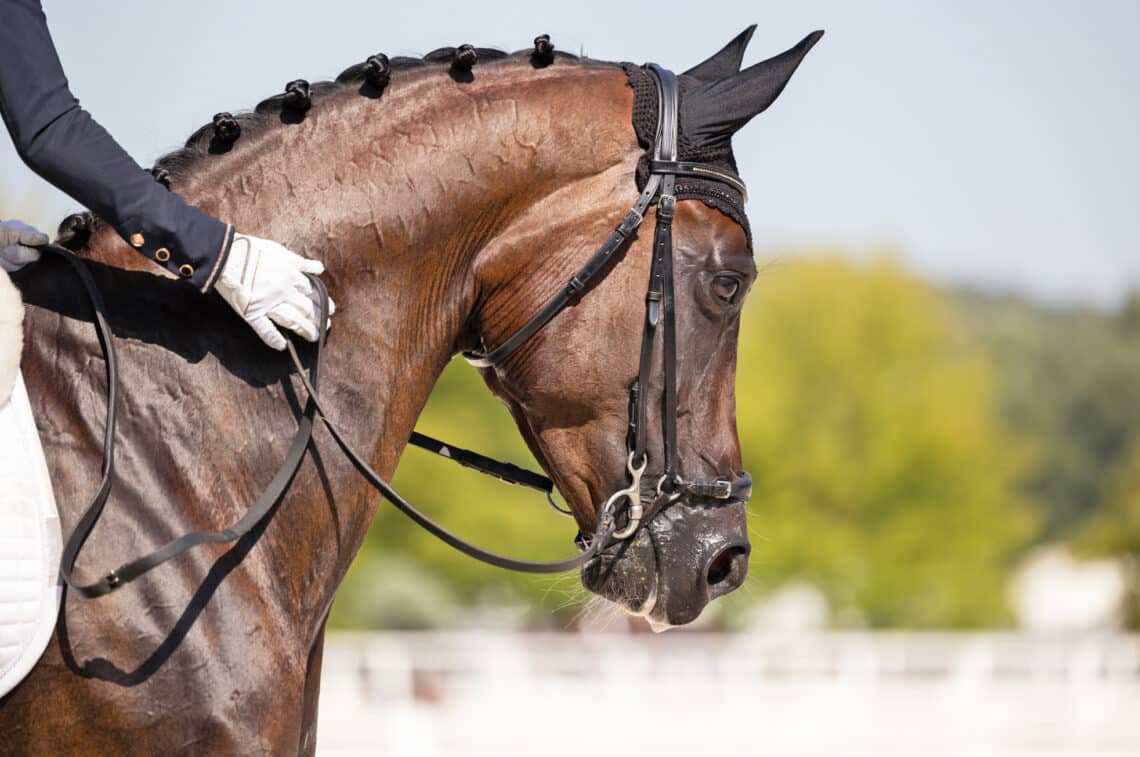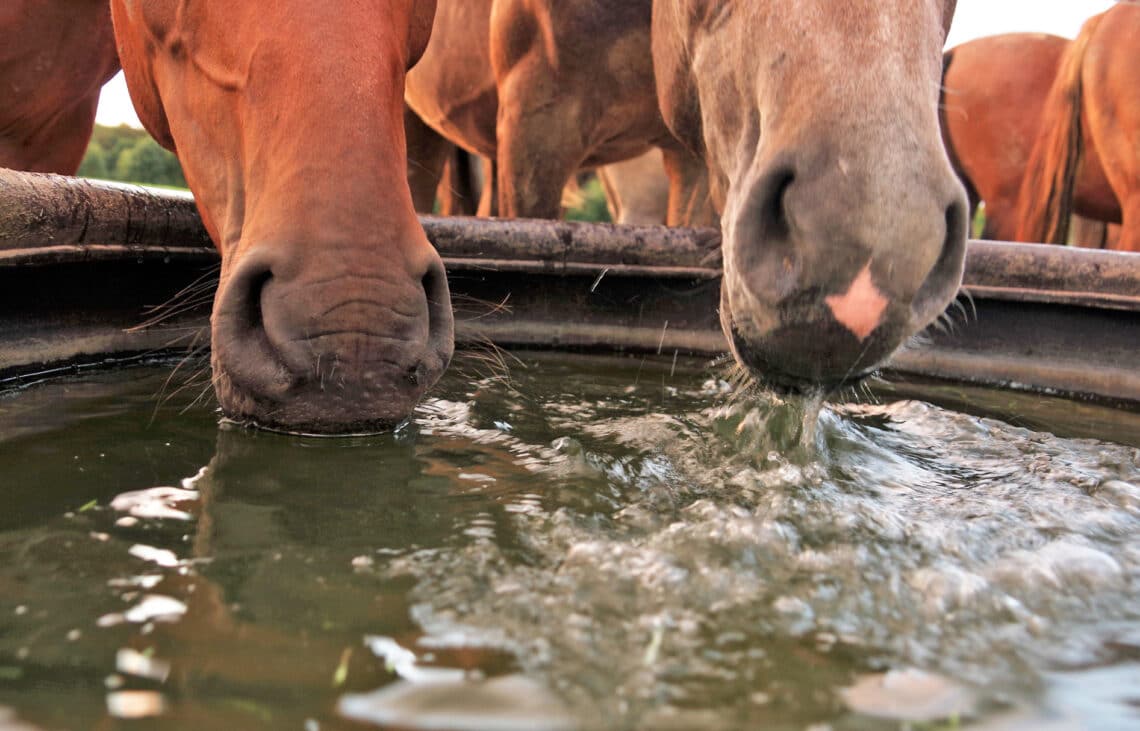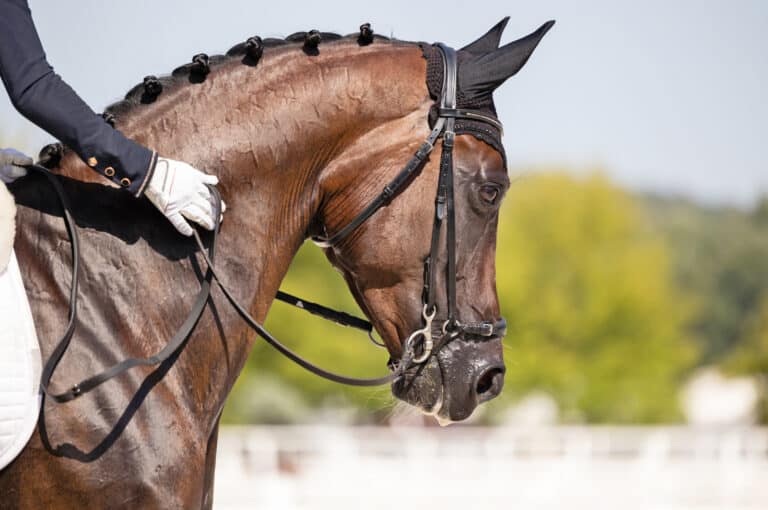
Heat load and fatigue can be a problem during hotter weather, but a bit of knowledge and a few basic precautions will help, says DR JENNIFER STEWART.
Summer riding and competitions are amongst equestrians’ top favourite things, and with an understanding of your horse’s needs and a few basic precautions, there’s no reason why hot days can’t be safe and comfortable for you both.
Heat build-up and heat dissipation (cooling) is all about heat and humidity. Because a horse’s cooling mechanisms are different when humidity is high, exercising your horse in summer when the weather is hot is very different to exercising when it is hot and humid, or warm and humid, and sometimes even cool and humid.
When the temperature is 20 to 25°C and the humidity is less than 30%, horses can easily cool the heat generated by their muscles during exercise. Blood is shunted to the skin and with an outside temperature lower than the horse’s body temperature, excess heat passes into the air. But this reduces the blood supply to muscles, which may result in fatigue. Onset of fatigue can be reduced by a high oil diet (250-750ml linseed oil/day).

As temperatures climb
However, when the air temperature reaches around 32°C, the cooling gradient is smaller. If the body and air temperature are the same, there is no gradient to allow heat to move from the body to the air. In this instance, evaporation through sweating becomes the primary means for cooling. However, when humidity is high, the water gradient between the skin and the air decreases, limiting the body’s ability to lose heat through sweating and thus its capacity to cool.
Other factors that contribute to heat stress include:
- Poor conditioning
- Lack of fitness
- Long-distance travel: horses lose around 2-3 litres of fluid each hour. Allow the horse at least 24 to 48 hours to rehydrate and recover before exercising strenuously.
- Warm-up too long or short: without a proper warm-up the rise in body temperature can be too fast for the sweating response to begin; too long a warm-up can increase the body temperature too much
- Excess body condition
- Age: foals and older horses
- Horses in direct sunlight when the temperature is greater than 37.5°C
- Hot, poorly ventilated stalls or floats
- Rough or steep terrain
- Rider inexperience
- Inadequate time to adjust to warmer weather conditions. A15 to 21 day acclimation may be needed for horses moving from cool or dry to hot, humid climates.
The key with heat stress is to spot the early signs, which vary between horses and may also indicate other disease conditions. Horses displaying signs of mild heat stress may not be obviously affected, so it is important to know what is normal for your horse so you can spot changes as soon as they occur. It can be difficult to distinguish normal fatigue and sweatiness from dangerous heat stress.
Here are the signs to look out for:
Signs of dehydration, heat stress, heat stroke and exhaustion
- Profuse sweating
- Less sweating or patchy sweating (may indicate anhydrosis or ‘puffs’)
- Thick, sticky sweat
- Hot skin which may become cold if the circulation shuts down
- Skin pinch test: insensitive technique for mild dehydration
- High heart rate
- Heart rate climbs after work stops
- Increased respiration rate (normal is 4-16 breaths per minute)
- Panting respiration: can occur with ‘puffs’
- Flared nostrils
- Breathing rate higher than heart rate
- Poor heart and respiratory rate recovery after exercise stops
- Rapid heart rate that matches breathing rate (thumps)
- Sunken/caved-in flanks
- Gut sounds
- High body temperature >40°C
- Profuse sweating and high body temperature but the skin feels cool
- Prolonged capillary refill time: press the gum and note time taken to recolour
- Excessive salivation
- Skin hot to touch
- Sunken eyes
- Tacky, dry, or sticky gums capillary refill time (3 secs)
- Little interest in feed or water
- Distress, agitation
- Stumbling
- Weakness
- Reduced urination
- Loss of skin elasticity
- Collapse
Keeping their cool
Heat load and fatigue can be a problem during hotter weather, but a bit of knowledge and a few basic precautions will help, says DR JENNIFER STEWART.
Summer riding and competitions are amongst equestrians’ top favourite things, and with an understanding of your horse’s needs and a few basic precautions, there’s no reason why hot days can’t be safe and comfortable for you both.
Heat build-up and heat dissipation (cooling) is all about heat and humidity. Because a horse’s cooling mechanisms are different when humidity is high, exercising your horse in summer when the weather is hot is very different to exercising when it is hot and humid, or warm and humid, and sometimes even cool and humid.
When the temperature is 20 to 25°C and the humidity is less than 30%, horses can easily cool the heat generated by their muscles during exercise. Blood is shunted to the skin and with an outside temperature lower than the horse’s body temperature, excess heat passes into the air. But this reduces the blood supply to muscles, which may result in fatigue. Onset of fatigue can be reduced by a high oil diet (250-750ml linseed oil/day).
As temperatures climb
However, when the air temperature reaches around 32°C, the cooling gradient is smaller. If the body and air temperature are the same, there is no gradient to allow heat to move from the body to the air. In this instance, evaporation through sweating becomes the primary means for cooling. However, when humidity is high, the water gradient between the skin and the air decreases, limiting the body’s ability to lose heat through sweating and thus its capacity to cool.
Other factors that contribute to heat stress include:
- Poor conditioning
- Lack of fitness
- Long-distance travel: horses lose around 2-3 litres of fluid each hour. Allow the horse at least 24 to 48 hours to rehydrate and recover before exercising strenuously.
- Warm-up too long or short: without a proper warm-up the rise in body temperature can be too fast for the sweating response to begin; too long a warm-up can increase the body temperature too much
- Excess body condition
- Age: foals and older horses
- Horses in direct sunlight when the temperature is greater than 37.5°C
- Hot, poorly ventilated stalls or floats
- Rough or steep terrain
- Rider inexperience
- Inadequate time to adjust to warmer weather conditions. A15 to 21 day acclimation may be needed for horses moving from cool or dry to hot, humid climates.
The key with heat stress is to spot the early signs, which vary between horses and may also indicate other disease conditions. Horses displaying signs of mild heat stress may not be obviously affected, so it is important to know what is normal for your horse so you can spot changes as soon as they occur. It can be difficult to distinguish normal fatigue and sweatiness from dangerous heat stress.
Here are the signs to look out for:
Dehydration: why water is not enough
Dehydration compromises the horse’s ability to sweat and cool, doubling the risk of heat stress. But sweat is not just liquid. It contains electrolytes: calcium, magnesium, sodium, potassium and chloride. Loss of electrolytes can suppress the thirst reflex and the desire to drink even in the face of dehydration. This is an important point to remember: exercise can suppress the desire to drink.
Dehydration of 2 to 3% can cause a 10% reduction in exercise capacity and performance. Correct administration of good quality electrolytes before and during moderate to intense work can increase the time it takes for a horse to fatigue by nearly 23%; meaning the horse can work for 23% longer before tiring. Our task is to provide the horse with adequate fluid and electrolytes. For horses on a predominantly hay or pasture diet, potassium intake is usually ample, but calcium and magnesium are often marginal to deficient.
In exercising horses, voluntary salt intake is highly variable and in one study, the intake of four out of six horses was well below even maintenance requirements. To replace losses from hard work, horses need to consume 50g a day from a salt block (weigh blocks regularly to determine intake). Tying-up is linked to deficiencies of electrolytes, vitamins and minerals, as well as diets rich in grains. Substantial amounts of magnesium can also be lost in sweat and magnesium intake should be doubled for horses doing moderate to intense exercise.
There are many electrolyte supplements on the market and it’s important to read product labels carefully. Generally, the higher the sodium chloride content, the better the product. For horses doing moderate daily exercise in cool to moderate temperatures, 25g of table salt twice a day increasing to 50g in hot weather is a good guideline. Add either straight salt, or a 3:1 ratio of salt to Lite or Lo-salt to their feed.
For the horse who is fussy about feed additives, try this cookie recipe: 2 cups grain, 2 cups rolled oats, 680g of electrolyte mix (commercial or homemade), 3 cups bran, 1-2 cups water, and 1 cup molasses, maple syrup or apple sauce to sweeten. Mix well and divide into 24 cookies. Cook at 175°C for 25 to 30 minutes. Each cookie has around 25g of electrolytes. Electrolytes do not necessarily have to be replaced by oral dosing in the same amount as they are lost as daily intake helps.
Providing water alone to a horse with electrolyte imbalances will only further dehydrate them. Adding salt to drinking water should be done with great care. Do not exceed 30g of salt per 5 litres of water and always provide separate plain water.
Sometimes the signs of impending heat exhaustion are difficult to recognise. If you suspect your horse is developing heat stroke, call a vet immediately and take extreme measures to cool your horse quickly. Heat stress can occur in all horses – and in a relatively short time if horses are unfit, the weather is hot and/or humid, or if fluid and electrolyte losses in sweat are not replaced. During racing, polo and polo-crosse, carriage driving and eventing, heat production can raise body temperature by 1°C per minute. Unless this heat is cooled, body temperature could continue to rise to 42°C, which is close to the limits of life. In endurance exercise, heat exhaustion is more often due to dehydration.
Cooling off
The FEI recommends continuous hosing or applying cold water, rather than repeated sweat scraping. Work from both sides of the horse and ensure the large veins on the inside of the legs and down the neck are continuously cooled. As cold water is applied it displaces the water warming up on the horse’s skin, making scraping off unnecessary. Walk your horse lightly whilst cooling to aid circulation and to help them cool down more effectively.
Dr Jennifer Stewart BVSc BSc PhD is an equine veterinarian, CEO of Jenquine and a consultant nutritionist in Equine Clinical Nutrition.
All content provided in this article is for general use and information only and does not constitute advice or a veterinary opinion. It is not intended as specific medical advice or opinion and should not be relied on in place of consultation with your equine veterinarian.



